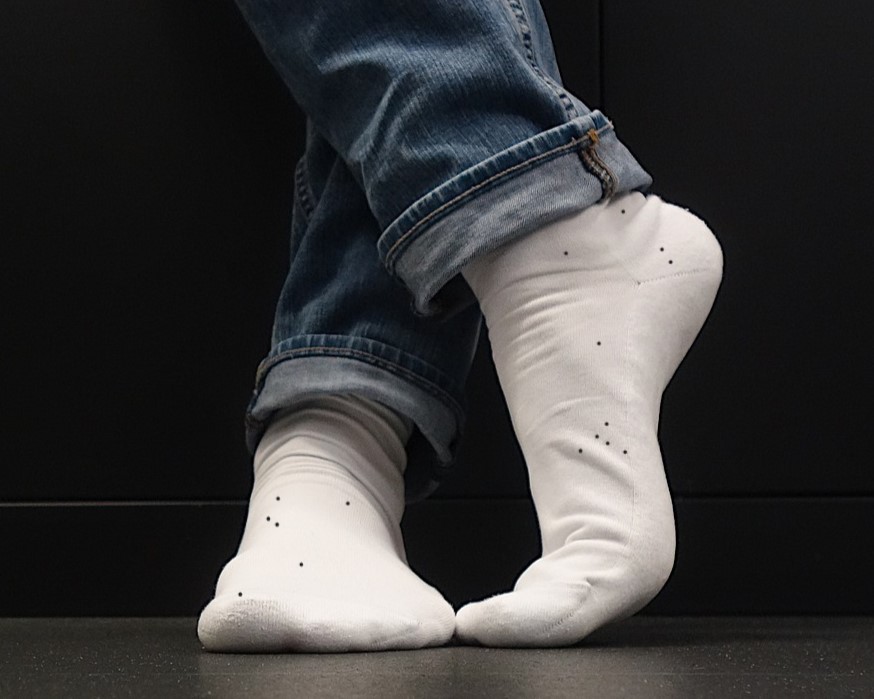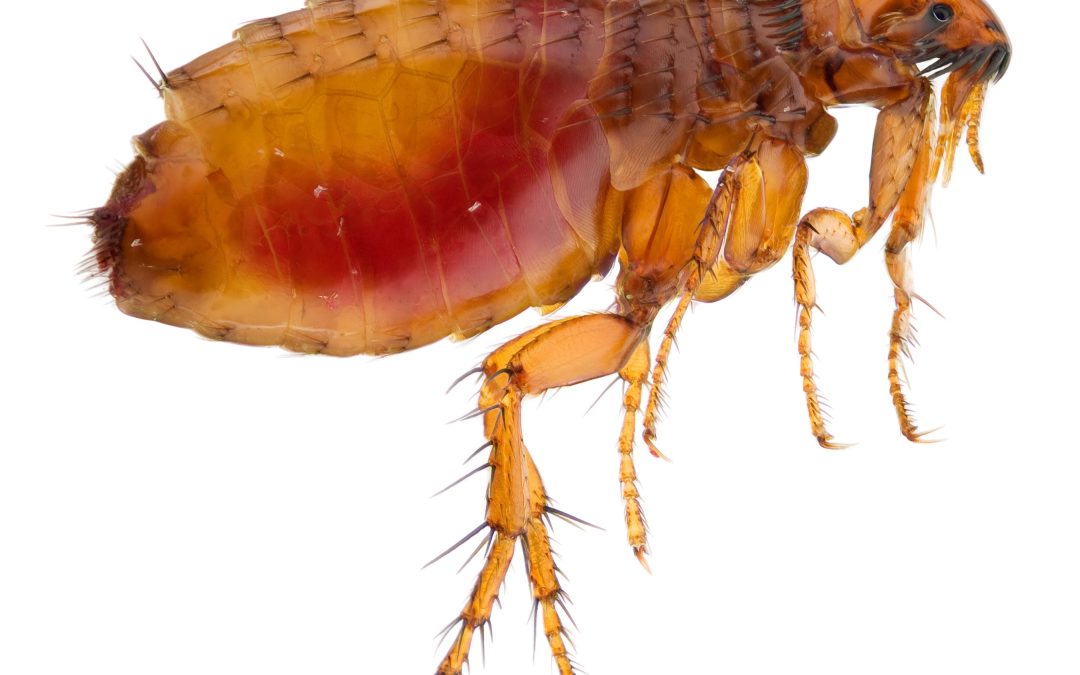Homes are supposed to be our bastions of comfort and relaxation, the one place in the world where we can shut out everything else and enjoy some peace.
But, what happens then when that peace is shattered by persistent itchy raised bumps all over your shins? Tiny stinging bites while you’re watching tv? Your corgi named Waffles is sitting in the corner, looking miserable and chewing on himself? Oh no, you might have fleas! Now what!?!
Key Takeaways
- Early detection is vital.
- A good inspection goes a long way.
- Take care of your pets.
- Flea traps can be effective in detection.
- Take care of your home, vacuum thoroughly.
- Don’t use over-the-counter flea insecticides.
Understanding Fleas: A Brief Overview
Meet the flea: these tiny critters are small enough to escape the swipe of a human hand and are known for their incredible jumping skills. Despite being just about the size of a pinhead—roughly 1/8-inch long—they can leap distances over 50 times their body length! They’re not just acrobatic show-offs, though; fleas are wingless insects with a taste for warm blood, which makes both your furry friends and you ideal targets.
You might notice these reddish-brown little bugs zipping through your pet’s fur or even feel the itch from their bites. And while they’re famous for being annoying, their impact goes beyond just making you and your pets scratch. Fleas can transmit some nasty diseases, acting as vectors from one host to another. Their rapid lifecycle, turning from egg to biting adult in just a couple of weeks, means a small problem can quickly turn into an infestation. Understanding how these tiny pests operate not only helps keep you informed but also prepares you to tackle any flea problems head-on, ensuring your home remains a comfortable, itch-free zone.
If you suspect there is a flea infestation in your home, confirming their presence early on is essential for effective control. Here are a few of our favorite methods to confirm a flea infestation:

We better not have fleas in this house!
Checking Your Pets for Fleas
If you’re lucky enough to share your home with dogs or cats, you already know the joy these furry family members bring. However, Waffles can sometimes unwittingly invite unwelcome guests like fleas into your living space. Let’s explore how to effectively inspect your pets for signs of fleas, ensuring they remain happy and healthy, and your home stays flea-free.
Inspect Your Pet’s Fur: Fleas are often first noticed on pets. Part your pet’s fur, especially around the neck, base of the tail, and belly, to look for small, dark, fast-moving insects. Fleas are about 1/8 inch long and reddish-brown.
Look for Flea Dirt: Flea dirt, or flea feces, looks like tiny black specks and is often found in your pet’s fur. You can confirm It’s flea dirt by placing the specks on a wet paper towel—if they turn reddish-brown, it’s a sign of digested blood, confirming the presence of fleas.
Monitor Your Pet’s Behavior: Is Waffles frequently scratching, biting, or grooming? This type of behavior can indicate flea activity. Hair loss or irritated skin might also be a sign.
Use a Flea Comb: A flea comb is an indispensable tool for pet owners, especially when dealing with potential flea infestations. These combs have closely spaced teeth that are designed to capture and remove fleas, flea eggs, and flea dirt from your pet’s coat.
How to Use a Flea Comb Effectively: Comb through your pet’s fur, especially in areas where fleas are likely to hide, such as around the neck and base of the tail. After each stroke, inspect the comb for fleas or flea dirt. Have a bowl of soapy water nearby to dunk any fleas you find, as this will kill them. Use a paper towel to wipe the comb down after dunking, then repeat in other areas.
Inspecting Your Home for Fleas
Once you’ve checked your pets, the next crucial step is to inspect your home thoroughly. Fleas can hide in the smallest of spaces and can quickly turn a small problem into a major infestation. Here’s how to conduct a comprehensive home inspection:
Focus on Pet Areas: Think about the areas your pets spend the most time. Does your cat sit on the back of the couch? Or think of the areas Waffles likes to lay: in his crate, on his bed, or maybe his favorite rug? This is where you should start! These areas are likely hotspots for flea activity and will show signs well before other areas of the home might.
Examine Soft Furnishings: Fleas can also hide in carpets, rugs, throw blankets, and cushions. Use a flashlight to carefully inspect for fleas themselves or flea dirt, which may appear as small black dots.
Look for Flea Dirt in the environment: Flea dirt can also be found on bedding, furniture, and carpets. Check areas where your pet spends a lot of time, such as their bedding or favorite resting spots.
Use a Flashlight: When dealing with any pest infestation, a good flashlight is your #1 tool. Fleas can be challenging to see, especially in dimly lit areas. Use a flashlight to check around your pet’s bedding, along baseboards, and in carpeted areas for any signs of fleas.
If you want a good recommendation, these flashlights are hard to beat!
White Sock Test: One of my personal favorites. Wear a pair of white socks and walk slowly through areas where you suspect flea activity, especially on carpets or rugs. Fleas are attracted to body heat and will jump onto your socks. The white background makes them easier to spot.

Spotting Fleas: The White Sock Test in Action
Flea Traps
Believe it or not, flea traps can be a really helpful tool for gauging the level of an infestation. They are easy to use, readily available, and inexpensive.
DIY Flea Trap: You can make a simple flea trap using a shallow dish of soapy water placed near a light source. Fleas are attracted to the light and heat and will jump into the water, where they will be trapped and drown. Place the trap on the floor in areas you might be having flea activity.
Commercial Flea Traps: These traps use a similar principle but may include sticky pads or other attractants to catch fleas. Place them in areas where you suspect fleas are present. These are readily available local at home improvement stores or you can find them online with a quick “flea trap” search on Amazon.
Here is one I found on Amazon made by Terro, who manufactures all sort of pest control products for homeowners.
Paper: What? Yeah.. just a plain white sheet of paper on the floor can sometimes help you identify fleas. Place sheets of paper in areas where activity could be presence and check them regularly for an signs.
Monitor for Flea Bites
Flea bites are not only irritating but can also serve as a clear indicator of the presence and severity of an infestation. As with all insect bites, they can be really difficult to disquinsh at times and it is best to work with a medical professional.
Recognize the Appearance: Flea bites typically appear as small, red, raised bumps on the skin. They are often incredibly itchy and may become increasingly inflamed and sore if scratched. Unlike mosquito bites, which are more randomly placed, flea bites often occur in clusters or lines, usually around the ankles and lower legs.
Track Bite Frequency: Keep a log of when and where on your body the bites occur. Increasing numbers of bites or spreading to new areas of the body can indicate a growing infestation.
Check for Allergic Reactions: Some individuals may experience allergic reactions to flea bites characterized by severe itching, hives, or rashes. In extreme cases, bites could trigger asthma or other respiratory issues. Monitoring the reaction to bites can provide crucial information about the need for medical intervention or professional pest control.
Secondary Infections: Due to their itchiness, flea bites are often scratched, which can lead to secondary infections. Signs of infection include excessive redness, swelling, warmth, and pus. Prompt treatment of bites and maintaining cleanliness can help prevent these complications.
When dealing with potential flea infestations, confirming their presence through positive identification is crucial before undertaking any treatment. Since reactions to insect bites can differ significantly among people, relying solely on bite marks can lead to misdiagnosis. It’s important to gather additional evidence of flea activity before moving forward with an sort of treatment or service.
What to Do if You Confirm a Flea Infestation
Once you’ve confirmed that pesky fleas have made themselves at home, it’s crucial to act swiftly to show them the door. Here’s a straightforward plan to tackle the problem:
- Treat Your Pets: Start with your furry family members by using vet-recommended flea treatments. Whether it’s topical solutions, oral medications, or flea collars, getting your pets treated is a key step in breaking the flea life cycle.
- Deep Clean Your Home: Fleas aren’t just on your pets; they love cozying up in your carpets, rugs, and furniture too. Wash all pet bedding and any affected fabrics in hot water to kill fleas at all stages of life. Give your entire home a thorough vacuuming every day, and make sure to empty that canister after each time!
- Over-the-Counter Insecticides: Although there are a myriad of products available to the average consumer online and in stores, flea infestations can be difficult to control even for a professional. There is no real substitute for experience. If you do decide to do any self-treatment, be sure to read and follow the directions on the product label to the letter. Just because these remedies are available over the counter doesn’t mean they can’t be hazardous to the health of you, your family, or your pets.
- Professional Help: If things feel out of control or the infestation seems too big to handle alone, it might be time to call in the pros. Professional pest controllers have the expertise and tools to quickly and safely reduce flea populations, giving you peace of mind and your home back from the invaders.
Now that you’re equipped with the knowledge and tools to properly identify a flea problem, you can start taking action today to safeguard your home and keep your furry friends happy.
If the situation seems overwhelming or if your DIY efforts aren’t cutting it, don’t hesitate to reach out for professional help. At Good Earth Pest Company, we’re committed to providing you with safe, effective solutions to all your pest problems, including stubborn flea infestations. Our team is here to ensure your home remains comfortable and pest-free. Give us a call when you need us, we are happy to help.
Who’s the bestest boy?! Waffles…he’s the bestest boy
~ Adam Hiddelson



